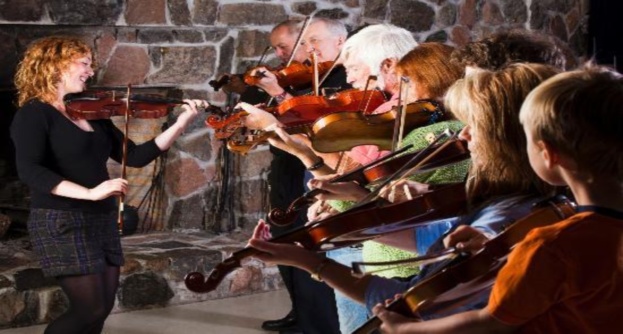Here there is more to Scotland than a curiosity about “hairy coos” and ancient castles. Now some senior Nova Scotia government officials are all abuzz about importing social enterprise ideas from across the sea where they feel this idea has taken root more so than here.
Thirty percent of Nova Scotians claim Scottish ancestry and, in the last thirty years, our own Celtic influenced cultural traditions have been reborn in music, dance and language. Do we need a lesson about how to play differently where non-profits are concerned?
What are social enterprises? Essentially they are non-profit organizations (in Canada charities and provincially incorporated non-profits that are not charities) that earn at least 50% of their revenue from market activities, typically the sale of goods and services. The definition of who is included in this cross-cutting category differs widely; publicly created organizations, those that provide contracted government services, co-ops and credit unions are sometimes in the mix.
Social Enterprise Scotland lists 147 member organizations who meet their own definition. A recent study by Amanda Tarr and George Karaphillis of Cape Breton University surveyed some 100 social enterprise organizations in Nova Scotia. Even if one accepts that the numbers of enterprises in both places are far from a complete picture, Nova Scotia, with a 1/5 of the population of Scotland, is leagues ahead, on a per capita basis, in terms of number of social enterprises. So why the sudden excitement about Scottish social enterprise?
Partly it has to do with government grasping at economic development straws, partly with the acceptance of a less activist public sector even on the left of the political spectrum. Public servants are not very familiar with the breadth and depth of how non-profit organizations are supported here although they are quick, like their political masters, to champion the idea that volunteerism has a bigger role to play. Apparently the jig is up on more public funding; communities need to get reel is their message.
We have a number of well known organizations in Nova Scotia that utilize social enterprise strategies. Indeed, we have a long-standing tradition of social enterprise dating back to the early co-operative and credit union movements. Modern examples include The Flower Cart (profiled in an earlier post), Prescott Industries, the Elizabeth Fry Society, and Lake City Woodworkers.
There may be merit in government taking a more strategic approach, supporting the creation of social enterprise non-profits where there are gaps in areas of non-profit activity here that have been successfully filled in other jurisdictions. This however would require a more activist public sector. Activism isn’t just about more funding, it is about turning to older not newer tunes.




Grant,
I agree that the idea of social enterprise has caught the imagination of many folks; dare I say that it is somewhat of a fad. With that said, I do think that it is important for all of us to identify what qualities we would think might be in a social enterprise. I think that I would not limit it to charities, as there are a breed of for-profits that have a very strong social mission. I also might say that there needs to be something about both engaging in innovative strategies and an interest in scaling up. There’s a massive academic literature on the subject, but I think that us pracademics are best served by discussing what we see in practice and how it relates to the scholarship. Thanks for getting me thinking about this.